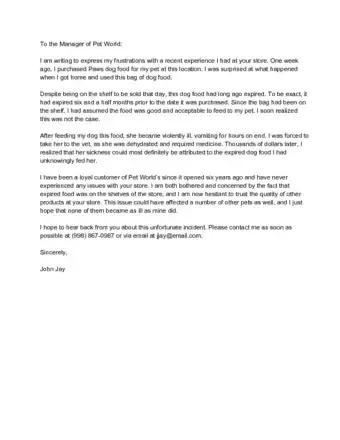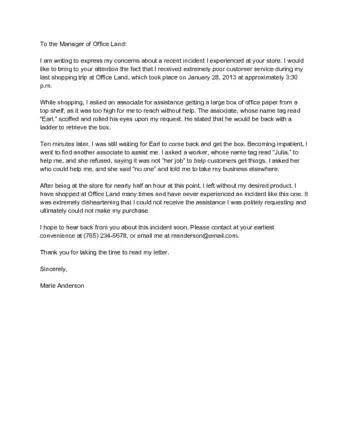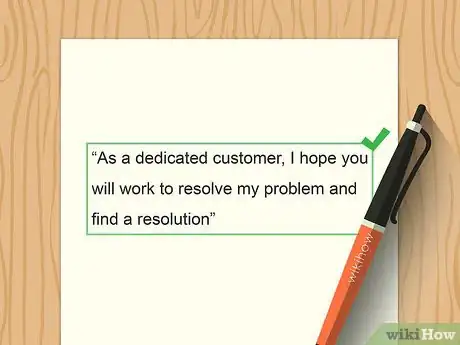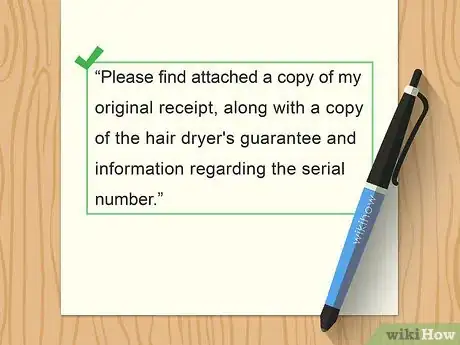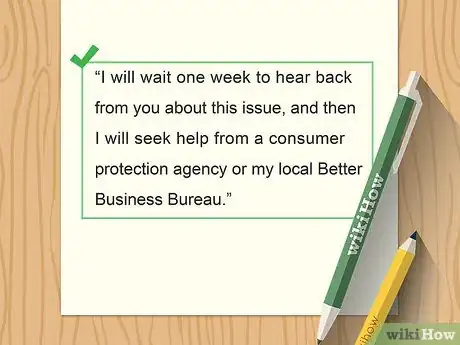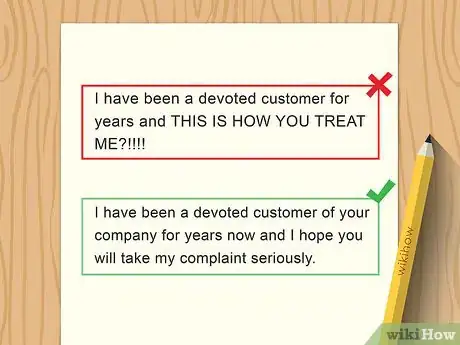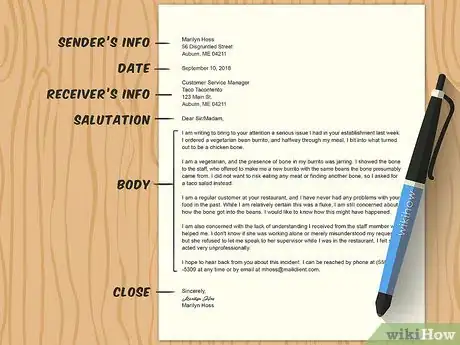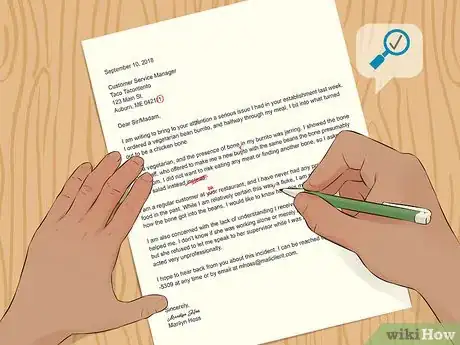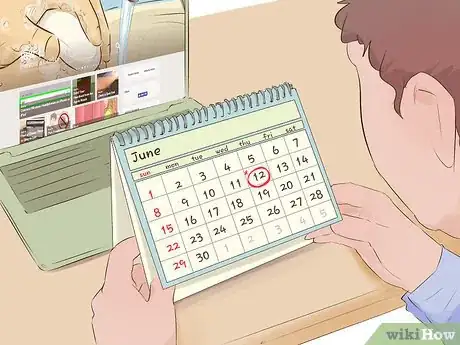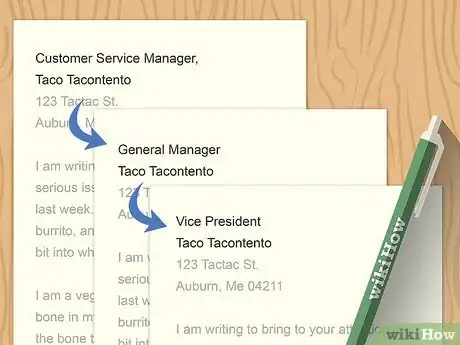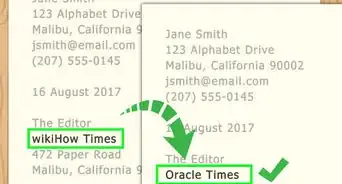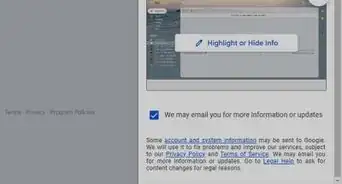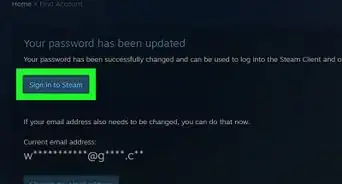This article was co-authored by Tami Claytor. Tami Claytor is an Etiquette Coach, Image Consultant, and the Owner of Always Appropriate Image and Etiquette Consulting in New York, New York. With over 20 years of experience, Tami specializes in teaching etiquette classes to individuals, students, companies, and community organizations. Tami has spent decades studying cultures through her extensive travels across five continents and has created cultural diversity workshops to promote social justice and cross-cultural awareness. She holds a BA in Economics with a concentration in International Relations from Clark University. Tami studied at the Ophelia DeVore School of Charm and the Fashion Institute of Technology, where she earned her Image Consultant Certification.
There are 8 references cited in this article, which can be found at the bottom of the page.
wikiHow marks an article as reader-approved once it receives enough positive feedback. This article has 19 testimonials from our readers, earning it our reader-approved status.
This article has been viewed 3,764,823 times.
Writing a letter of complaint is something most people have to do at some point in their lives. This wikiHow will show you how to write a complaint letter to a company.
Steps
Sample Complaint Letters
Writing Your Complaint Letter
-
1Address your letter to the customer service department. When writing a letter of complaint, your best chance of success will come from directing the letter to the customer service department of the company. The customer service department is accustomed to dealing with complaints and your letter is likely to be processed efficiently and effectively.[1]
- Try to find out the name of the customer service manager or director and address your letter to them personally. Begin your letter with Dear Mr, Mrs, Miss or Ms followed by their surname. If you cannot find the name of the customer service manager, simply write Dear Sir or Madam.[2]
- You should be able to find the address of the customer service department on the company's website, on any of the company's promotional or advertising materials or product packaging or labels.[1]
-
2Quickly get to the point of your letter. The very first line of your letter should clearly address why you are writing the letter and what your exact complaint is. Give as many pertinent facts as possible, including the date, time and location where you made the purchase or received the service, along with any relevant serial or model numbers.[3]
- The recipient of the letter should be able to identify the point of the letter in under five seconds, so avoid any long, rambling intros.[4]
- You may provide further detail or explanation of the situation in the paragraph following your opening sentence, but the first line should draw attention to your complaint as succinctly as possible.[5] Make sure to only state the facts, not the emotion. Although you might be extremely upset and distraught, the recipient doesn't need to read that, or you might end up overshadowing the real issue.
- For example, your opening sentence might read: "I am writing to complain about a faulty hair dryer that I purchased from your company on the 15th of July at your location on First Street, Exampletown."
Advertisement -
3State specifically what outcome or remedy will satisfy you. If you want a replacement, a refund, a repair, or some other form of compensation, state this clearly in your second paragraph. This will help to avoid receiving a form letter or other stock response, and give the recipient something to work with on their end.[7]
- Try to be as constructive as possible in your comments, suggesting a way that you can move forward and continue your relationship with the company.[8] If you demand a refund or some other form of compensation, while simultaneously informing them that you plan on taking your business elsewhere, they will have little incentive to try to resolve the problem[9]
- If you would like the company to correct a broader problem, state that in your letter as well, but recognize that such a thing may take time.
- Do not threaten legal action in your first communication. It may be the solution you ultimately require, but send your complaint letter first and await a response.
-
4Attach copies of supporting documents. These may include receipts, guarantees, warranties, copies of checks you sent and, if appropriate, photos or videos. All documentation should be included with your letter.
- Make sure that you send copies of any documentation you wish to include, not the originals. That way, there's no chance of this key information being lost or mislaid, should you need to provide evidence to someone else.
- Also make sure to state in the body of the letter the exact materials you are including. For example: "Please find attached a copy of my original receipt, along with a copy of the hair dryer's guarantee and information regarding the serial number."[10]
-
5Give them a time limit to resolve the matter. It is helpful to provide an exact time period within which you would like the issue to be resolved. This will give you peace of mind and will help bring the issue to a speedy conclusion.
- Providing a time limit will also help to prevent the possibility of your letter becoming lost or forgotten about, which may lead to further awkwardness and resentment between you and the company.[11]
- Just make sure that the time period you provide is reasonable. A week or two is usually sufficient, though this will vary depending on what your requests are.
-
6Finish the letter respectfully. Thank the recipient for their assistance, and let them know how and when they can reach you to resolve the matter. This will make their job a lot easier, resulting in a more efficient outcome for you.
- Sign off the letter with Yours sincerely, if you know the name of the person you are writing to, or Yours faithfully if you referred to them as "Sir" or "Madam". Avoid informal closings such as "Best," or "Yours truly."[12]
Achieving the Correct Tone and Format
-
1Be polite. You may be angry, and may have every right to be, but being rude will only put the recipient on the defensive. Write in a respectful tone and avoid making threatening, angry or sarcastic comments at all costs.[13] Remember that the person reading your letter was not directly responsible for whatever happened, and they will be much more responsive and willing to please a gracious, polite customer than an angry, accusatory one.[14]
- Remember, the company to which you are writing probably isn't out to get you, intentionally. Most companies have an interest in their customer's satisfaction.
- You will have much better success treating the recipient as somebody who wants to help you, rather than assuming they're filled with malicious intent.
- Don't write when you're furious. Wait to write your letter until you have calmed down. Or if you wish, write the letter while you are fully steamed, and then let it sit for a day or two before you send it. In all likelihood, you will want to rephrase things in a less-incendiary way.
-
2Be concise. Customer service representatives may receive as many as hundreds of letters a day, so it's vital that you get to the point quickly, so they know exactly what they're dealing with as soon as they begin reading. If your letter is too long or detailed, the reader will be inclined to skim its contents and end up with an unclear idea of the exact problem or your desired resolution.[15]
- Avoid superfluous detail or going off on long rants or tangents.
- Try to keep your letter on a single page, or under about 200 words.[16]
-
3Be authoritative. Being authoritative in your letter creates the right tone and lets the company know that your complaint is to be taken seriously. This is especially true of more serious complaints, which may have considerable financial implications.[17]
- Being authoritative encompasses a range of things, such as the quality of the language used, your knowledge of your rights and the company's responsibilities, as well as the professional presentation of the letter.[18]
- All of these things give you credibility, which should positively effect the response to your letter.
-
4Format your letter in a clean, correct way. As mentioned above, formatting your letter in a professional way can favorably influence how your complaint is received. Include your name, address and the date in the top right-hand corner, followed by the name or title of the person you are writing to, along with the company's address, on the left-hand side, just above the body of the letter.
- Always type up your letter on a computer, this makes it easier to read and is much cleaner looking. If you must hand write your letter, make sure your writing is clear and legible, with no crossed out words or ink smudges.
- To write your signature, leave a blank space under the Yours faithfully or Yours sincerely where you can write in your signature by hand. Underneath this space you should also type your name so it is easily read.[19]
- Keep the letter tidy and well-spaced, with paragraphs of approximately equal-size.
-
5Check spelling and grammar. Incorrect spelling and grammar can negatively influence how your complaint is received. Make sure to do a spell check on your computer before printing the letter, or have someone else read it over before you send it.[20]
Following Up
-
1Wait until the time limit you provided is up. Be patient and do not pursue any further action until the time limit you provided in your initial letter is up. If this date passes and you still haven't heard anything, you may follow up with a phone call or email to check if the letter was received. It is always best to give the company the benefit of the doubt.
- If you still do not receive any information regarding your letter or if you do but the situation was not handled to your satisfaction, you can proceed by addressing your complaint to someone higher on the chain of command.[21]
-
2Proceed along the chain of command. If you are unsuccessful in your dealings with the customer service director, try to find out who the next person in the chain of command is and reach out to them instead. Each time you move up the ladder, whether it's from Customer Rep to Supervisor to Director to Vice President to CEO, attach the correspondence you have had at the previous level. This will update your new company representative and very possibly get the matter resolved in a non-litigious way.
- It is better to start with the customer service department before working your way up instead of going to straight to the top. This is because the customer service department are more used to dealing with these types of complaints and any letters addressed to the CEO will probably be referred back to this department anyway.[22]
- If this is the case, the employees of the customer service department might automatically regard you unfavorably, as you tried to go over their heads.[23]
- Be aware that if you are writing a letter to a CEO or Managing Director, it will need to be extra clear, concise and well-written, as they will have no prior knowledge of the incident.
-
3If you wish to pursue legal action, see an attorney. He or she will know how to proceed. Keep in mind that legal action should be your last resort and leading with it in your letter sets a negative tone and will derail any requests for compensation you may ask for at the same time. It also may come back to bite you if your bluff is called.
Community Q&A
-
QuestionHow do I write a complaint letter?
 Community AnswerStick to the facts. Tell them what happened, and back up your opinions with facts. Be assertive, but not angry.
Community AnswerStick to the facts. Tell them what happened, and back up your opinions with facts. Be assertive, but not angry. -
QuestionShould I take the letter in personally or mail it if they're local?
 Community AnswerTaking the letter in is better because it shows how much you care about the issue.
Community AnswerTaking the letter in is better because it shows how much you care about the issue. -
QuestionHow can I write a letter about how my manager is always shouting?
 Community AnswerYou will want to contact your human resources division if your company has one. If not, I would suggest contacting either the direct supervisor of your manager, including the owner if that is the case. Don't threaten legal action, but make it clear that you feel you are being harassed and it needs to stop.
Community AnswerYou will want to contact your human resources division if your company has one. If not, I would suggest contacting either the direct supervisor of your manager, including the owner if that is the case. Don't threaten legal action, but make it clear that you feel you are being harassed and it needs to stop.
Warnings
- It is illegal to write a letter that contains language threatening physical violence, destruction of property, or assault to health or safety. A threat can be interpreted as harassment and grounds for action in a court of law and it can be subject to penalties ranging from fines to prison time. Do yourself a favor and put threats out of mind. Do not put them in writing and send them!⧼thumbs_response⧽
References
- ↑ 1.01.11.21.31.41.51.61.7http://www.businessballs.com/complaintsletters.htm
- ↑ 2.02.1http://oxforddictionaries.com/words/letters-of-complaint
- ↑ https://www.scribendi.com/advice/how_to_write_a_letter_of_complaint.en.html
- ↑ https://www.aresearchguide.com/write-a-complaint-letter.html
- ↑ https://www.aresearchguide.com/write-a-complaint-letter.html
- ↑ https://en.oxforddictionaries.com/writing-help/letters-of-complaint
- ↑ https://en.oxforddictionaries.com/writing-help/letters-of-complaint
- ↑ https://www.aresearchguide.com/write-a-complaint-letter.html
- ↑ http://www.infoplease.com/ipa/A0002121.html
- ↑ https://www.legalzoom.com/articles/the-dos-and-donts-of-writing-a-demand-letter
- ↑ https://www.aresearchguide.com/write-a-complaint-letter.html
- ↑ https://www.nytimes.com/2017/06/15/smarter-living/consumer-complaint-writing-letter.html
- ↑ https://www.scribendi.com/advice/how_to_write_a_letter_of_complaint.en.html
- ↑ https://www.scribendi.com/advice/how_to_write_a_letter_of_complaint.en.html
- ↑ https://www.nytimes.com/2017/06/15/smarter-living/consumer-complaint-writing-letter.html
- Send this Jerk the Bedbug Letter: How Companies, Politicians, and the Mass Media Deal With Complaints and How to Be a More Effective Complainer, by John Bear.
About This Article
The easiest way write a complaint letter to a company, is to quickly get to your problem. Include your desired resolution in the body of the letter, and state a time limit for the solution. Close the letter respectfully by writing “Yours sincerely, [Your Name]” or “Respectfully, [Your Name]”. Send your letter to the customer service department. For advice on how to format your letter, read on.

